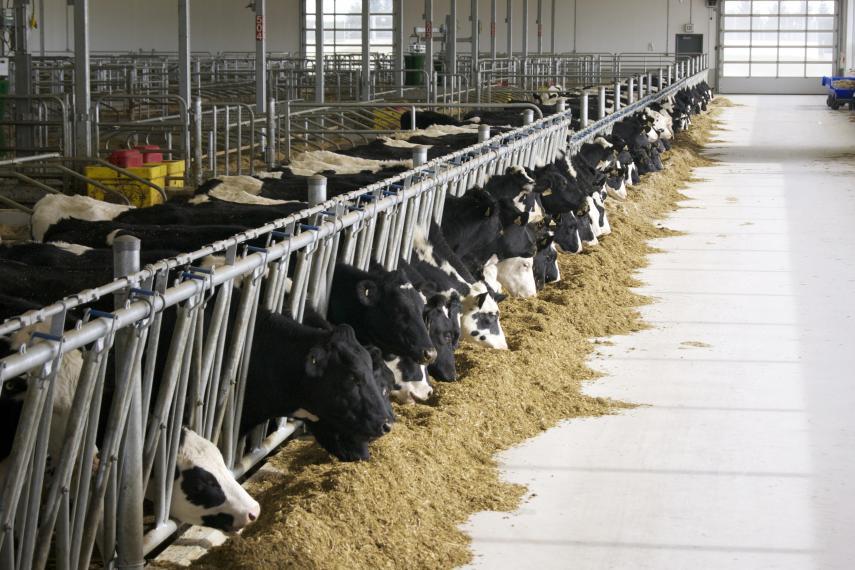Reducing dairy-related greenhouse gases

Every little bit helps when it comes to reducing greenhouse gas emissions, and researchers at the University of Guelph’s School of Environmental Sciences have some suggestions about how to help.
For example, they’ve found that completely emptying livestock manure storage systems is a relatively simple but effective method of reducing methane emissions to less than half of those produced by partially emptied systems.
They’ve also determined that anaerobic digestion (which uses microbes to break down manure in tanks that exclude oxygen to produce biogas) can mitigate methane emissions by up to 60 per cent when compared with liquid storage systems. It’s expensive, but effective.
“Our findings show some methods are useful for reducing carbon emissions which incur few additional costs for farmers, and some others may become more popular if a price is put on carbon,” says researcher Prof. Claudia Wagner-Riddle.
This research is part of Canada’s commitment to reduce greenhouse gas emissions, which was made at the Copenhagen climate change summit in 2009. Globally, agriculture contributes about 14 per cent of greenhouse gas emissions.
“Even small actions like covering stored manure with straw or increasing the fat content of dairy rations a few per cent can reduce the amount of emissions associated with a dairy operation,” says Wagner-Riddle.
Additional strategies include applying manure in the spring closer to crop planting, as opposed to the fall, to avoid winter nitrogen losses. Producers can also avoid adding excess nitrogen to crops by performing soil tests, which determine how much nitrogen is already available in the soil. And separating solids (“food” for methane-producing microbes) from liquid manure can help reduce emissions by about 30 per cent.
Research results are being summarized into fact sheets to be made available to producers through the Dairy Farmers of Canada website, dairyfarmers.ca.